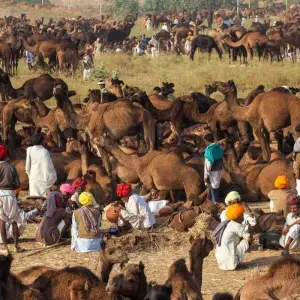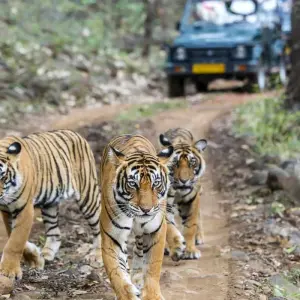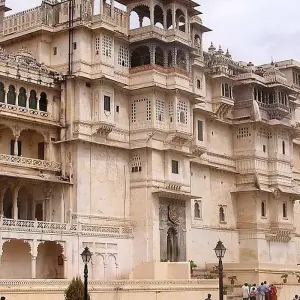Early in the morning we travel west about 1 1/2 hours to Fatehpur Sikri, the once-fabled Mogul capital that has taken on a sleeping beauty quality, lying quietly but wonderfully preserved. The Great Mughal Emperor Akbar built Fathepur Sikri (the City of Victory) during the second half of the 16th century as the capital of the Mughal Empire. A large number of masons and stone carvers worked hard on an area that was over two miles long and a mile wide. Using the locally available red sand stone, they created a complex of monuments and temples, all in a uniform architectural style, including one of the largest mosques in India, the Jama Masjid. Some fifteen years after the work was completed, it was realized that there was a lack of adequate water supply. The pristine complex was abandoned, and the capital shifted back to Agra. Continue to Rantanbhor, about 3 ½ hours south-west, arriving for lunch at the hotel. Ranthanbhor encompasses nearly 152 square miles of dry deciduous forest in southwestern Rajasthan, and in the heart of this forest, the Aravali and Vindhya ranges meet. The park derives its name from the fort of Ranthanbhor, which sits on a rocky outcrop in the forest. The landscape is dotted with ancient Banyan trees, Dhok and Pipal trees, clusters of mango trees, and crisscrossed with evergreen belts. The terrain is made up of massive rock formations, steep scarps, perennial lakes and streams, and forest that suddenly opens up into large areas of savannah. For a relatively small area, the park has a rich diversity of fauna and flora. The species list includes 300 trees, 50 aquatic plants, 272 birds, 12 reptiles (including the marsh crocodile), amphibians, and 30 mammals. Other than the tiger, for which the park is most famous, other predators found are leopards, striped hyenas, jackals, caracals, and jungle cats. Also seen are sloth bear, sambar deer, chital (spotted) deer, nilgai (blue bull) antelope, wild boar, chinkara (Indian) gazelle, Indian hare, mongoose, common langur, palm civet, palm squirrel, porcupine, and monitor lizard. In the afternoon, take a safari to the park to see wildlife in its natural habitat and to “hunt“ for the elusive tiger. inner.






